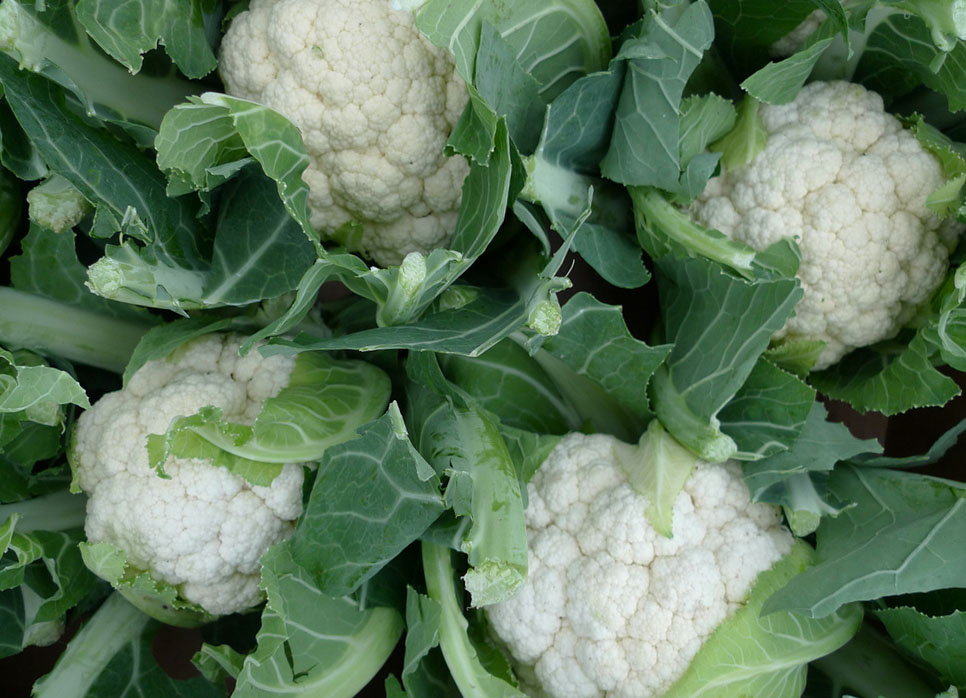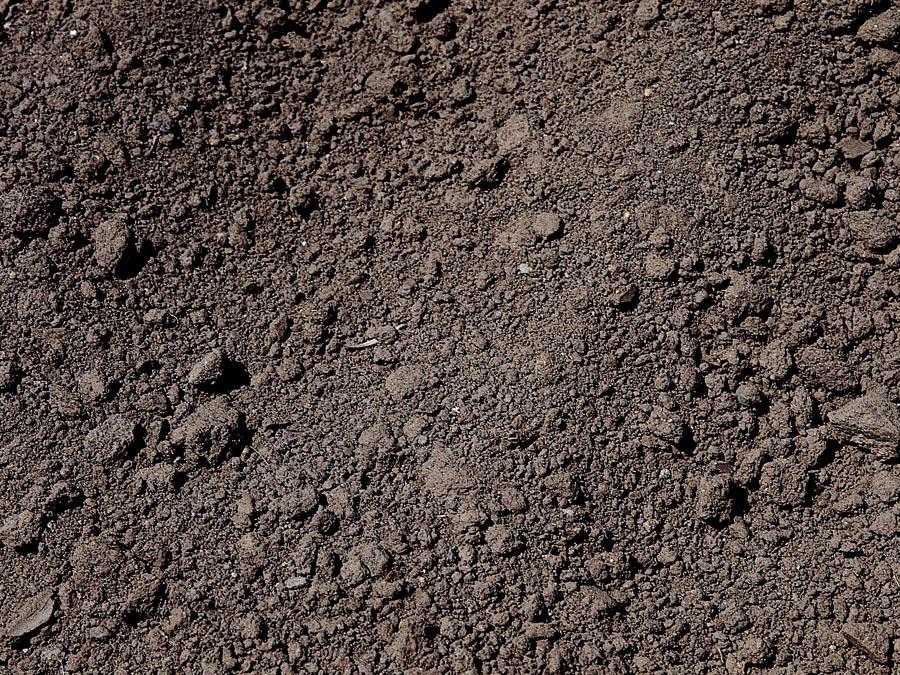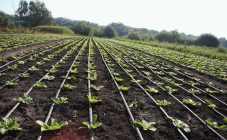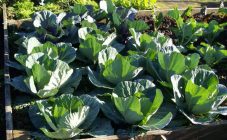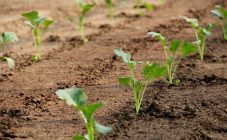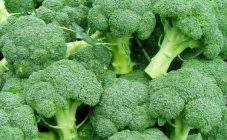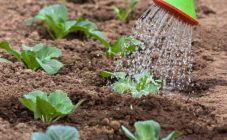Content:
Vegetables grown in the open field differ from their congeners from the greenhouse in a more delicate aroma and natural taste. They also contain more vitamins and beneficial compounds. Therefore, to grow cauliflower, it is better to resort to the old grandfather's method - the classic planting in the garden.
Basic information about culture
Cauliflower is an annual crop of the cruciferous family. Homeland - Mediterranean. Main characteristics:
- fibrous roots located near the surface soil;
- the heads of the inflorescences (modified flower shoots) are semicircular, needing additional fertilizing with microelements for normal development;
- brushes (edible part) are dense, flowering up to 15 cm in length;
- inflorescences are soft to taste;
- milky shade;
- the growing season from the moment of emergence of shoots is 90-120 days.
The culture is light-loving. Heads of cabbage develop normally in a temperature range of 10-25 ° C, otherwise they will be small or loose.
Most popular varieties
Leading cauliflower varieties loaded with vitamins, antioxidants and anthocyanins:
- Purple Rosalind;
- F1 hybrid sedan;
- Regent MC;
- Express MS;
- Shannon;
- Amazing F1;
- Green Station wagon.
How to grow cauliflower
Cauliflower is grown exclusively by seed, transplanted in planting containers. It is better if these are disposable cassettes, plastic cups or peat pots, since the vegetable is not adapted for picking due to the peculiarities of the structure of the root system and will hurt, take root for a long time.
Before planting, seedlings must be etched by immersing them for 15-20 minutes. in a warm solution of potassium permanganate, then rinse with cold water and dry to avoid infection with fungus, root rot.
Variety selection
When choosing the optimal variety of cauliflower, it is worth taking into account the climatic weather conditions. Recommended varieties for growing in the Urals, Siberia, Moscow region:
- early ripening - early Gribovskaya, Movir 74;
- mid-season - Pioneer, Fargot;
- late ripening - Skywalker F.
In hot regions, it is better to plant Ameizing, Coleman varieties - high-yielding hybrids that normally tolerate temperatures above 25 ° C.
Landing dates
It is better to sow cauliflower seeds in a seedling method in 2-3 stages, because the heads of the inflorescences grow quickly. If you cut them off in time, they will begin to crumble, losing their taste.
If you want to get an early harvest (in June), you need to plant seedlings in open ground in a permanent place in early May, and to get ripe heads in July - after May 25. For harvesting the autumn harvest for the purpose of winter harvesting - from June 10-12.
Landing scheme
Unlike white-headed relatives, cauliflower absorbs more nutrients throughout the growing season. It needs to maintain high soil and air humidity, nitrogenous feeding three times per season.
It is better to plant seed on loose loamy soils with a high content of humus, potassium and nitrogen (in%). Slightly acidic, neutral lands with previous crops are suitable: potatoes, legumes, vegetable roots.
The standard scheme for planting cabbage seeds is as follows:
- pour the prepared substrate into each container;
- place 1-3 seeds, close up to a depth of 1.5 cm;
- cover on top with a thin layer of earth and polyethylene to create a greenhouse effect;
- put containers in heat for seed germination at a temperature of 20-22 ° C;
- sprinkle the soil with water 4 days after sowing from a spray bottle;
- wait for shoots.
Seedling care
Stages of home care:
- Water in moderation, loosen the soil for 45-56 days until 5 true leaves are formed.
- Make a pick, transplant the seedlings into separate containers (cups) after 10-14 days.
- Feed the emerging seedlings with a composition of cool water (1 l) and fertilizers from microelements as the second true leaf appears.
- Feed with a secondary composition of ammonium molybdate, boric acid, copper sulfate and water.
- Spray the leaves with a mixture of potassium sulfate and water.
- Temper the seedlings before planting in open ground, keeping them outdoors in the morning and leaving them overnight for 3-5 days.
- Stop watering 7 days before transplanting into open ground
- Thoroughly water the seedlings under the root with water at room temperature 2-3 hours before planting in open ground.
Landing in open ground
The agrotechnical stages of planting and growing cauliflower in the open field in the garden of a summer residence are not much different from the cultivation of other species. The main thing is to prepare the soil in advance, pay special attention to the ripening heads, water, loosen and feed the seedlings in a timely manner. It is better to plant in sunny areas in order to avoid defective head formation in the end. The preferred soil is nitrogenous, loamy, rich in humus (black earth).
The scheme of planting in the ground is as follows:
- Dig up the soil in the fall, apply potassium-phosphorus fertilizer (poplar leaves, humus compost).
- In the spring, dig deep holes at a distance of 50-60 cm from each other for mid-season, early varieties.
- Add a nutrient mixture (2 handfuls of humus, 2 tablespoons of complex fertilizer, 2 handfuls of wood ash).
- Mix the composition thoroughly in the wells.
- Water abundantly.
- Move the seedlings from the pots to the holes together with the ground.
- Pour 1 liter of water into each well.
- Mulch lightly, loosen the soil around the edge.
- Cover with a thin material for quick survival of seedlings, safety from the onslaught of pests, possible frost and sunlight.
To create a humid and warm microclimate, to obtain dense and large heads of cabbage, it is better to plant on a cloudy day. You can cover with plastic bottles by cutting off the bottom. Watering for the first time should be every evening, until the sprout takes root, but not overdo it, despite the cauliflower demand for nutrition and moisture.
After the roots take root and the first ovaries appear, watering should be reduced to 2 times a week. To preserve moisture, the aisles can be sprinkled with organic matter (cut grass).
Further care
The soil should not be allowed to dry out, therefore, in the first days after planting, it is important to water the cabbage daily. As the heads are formed - 2 times a week. You need to feed the seedlings three times per season:
- 1 time with a mullein solution after 2 weeks from the moment of planting in the ground (if the seedlings were not treated with molybdenum or boron earlier, then 2-3 days after planting, they can be sprayed with a solution of boric acid, ammonium molybdenum acid and water, that is, foliar feeding);
- 2 times - with mineral fertilizer (ammonium nitrate, superphosphate, potassium chloride) after 2 weeks with the introduction of fertilizers into the grooves near the beds of 10 cm;
- 3 times during the period of tying the heads - urea, superphosphate, potassium chloride, vegetable mixture (universal-2, zeovite multi cabbage, agriculture clean leaf) or potassium sulfate.
It is necessary to loosen, huddle the soil after each watering and top dressing. Instead of loosening, you can use mulch, putting fallen leaves and sawdust under each root of the cabbage.
Once a season, it is recommended to powder the culture with tobacco, wood ash (1 tbsp. Per 1 m² of area) in order to avoid the onslaught of pests.
It is important to carry out weeding in a timely manner, avoiding drying out of the soil, rapid growth of weeds, overcrowding of plantations, in order to avoid pest damage, shading of the crop and the formation of dark spots on the inflorescences. As a sprayer, you can use a decoction of burdock, onion husks.
Parasites and methods of dealing with them
Various parasites attack cauliflower. It is important to deal with them in a timely manner, treat and spray with biostimulants, anti-stress agents:
- from aphids - symbiont growth biostimulator, station wagon, solution (tobacco + wood ash + laundry soap);
- from cabbage fly - ash or lime with a consumption of 20 g of the mixture per 1 m² of area;
- from a cruciform flea - fluff lime or ash for dusting;
- from scoops, white women - biological products (lepidocid, entobacterin, bitoxibacillin);
- from the black leg - the biological product Rizoplan (0.1%).
How to harvest correctly
Harvesting is carried out as the heads ripen: reaching 8 cm in size together with 3 leaves and a stump 2 cm from the bottom leaf. The main thing is not to allow scattering and cracking of inflorescences, the appearance of a purple hue in order to avoid deterioration of taste. Why is it important to shade them in a timely manner, protecting them from the sun, tying the upper leaves above them.
Cauliflower doesn't store well in basements, so it's best to freeze it. For the preservation of vitamins - cut the heads into small pieces and put them in the freezer.
Cultivation of cauliflower is not particularly difficult. But to get an excellent harvest, it is worth considering some of the subtleties of cultivation given above.
